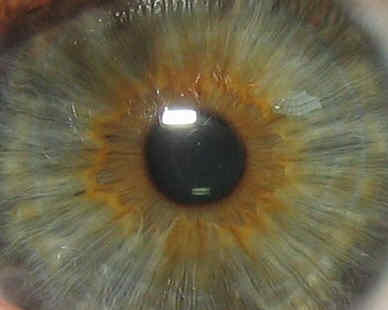| Irises Change Over Time - Problem for Biometric Testing |
| Written by Alex Armstrong | |||
| Monday, 28 May 2012 | |||
|
Iris scanning may not be as reliable an identification technique as previously assumed, New research has discovered that irises are susceptible to the effects of aging, causing them to change over time. Iris scanning is one of the biometric techniques being widely adopted for personal identification by governments and for security purposes by border agencies, governments and Google (see Google Data Center Security). However it seems that faith in the longevity of the method may be misplaced according to the results of a study to be presented next month at a biometrics workshop at the IEEE Computer Vision and Pattern Recognition Conference in Providence, Rhode Island and previewed in Nature News.
Kevin Bowyer, a professor of computer science at the University of Notre Dame in Indiana and his colleague Samuel Fenker used state-of-the-art, commercial iris-matching software and more than 20,000 different images of 644 irises, taken between 2008 and 2011. They compared the quality of a match between two images of the same iris that were recorded roughly a month apart, to pairs of images taken one, two or three years apart. They found that the rate at which the system failed to match two images of the same iris, known as the false non-match rate, increased by 153% over the three years. This suggests that the claim made by proponents of iris biometrics that a single enrolment scan should last a lifetime can no longer be accepted. According to Bowyer the research points to the need to develop iris-recognition algorithms that are less affected by ageing:
“The development of ageing-resistant algorithms for iris biometrics has not been studied at all. In contrast, in the face-recognition research community, there is a lot of work on developing algorithms to match faces in the presence of significant ageing.” More InformationAgeing eyes hinder biometric scans Related Articles
To be informed about new articles on I Programmer, install the I Programmer Toolbar, subscribe to the RSS feed, follow us on, Twitter, Facebook, Google+ or Linkedin, or sign up for our weekly newsletter.
Comments
or email your comment to: comments@i-programmer.info
|
|||
| Last Updated ( Monday, 28 May 2012 ) |


